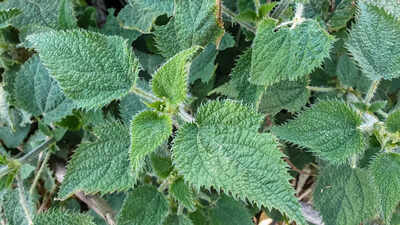ARTICLE AD BOX

Plants are among the most crucial life-supporting entities on the planet, while they not only provide Oxygen for breathing and survival, but some of them also have healing properties that cure life-threatening ailments.While most plants appear harmless, yet hidden in the rainforests grows a plant that is quite dangerous and painful, and is popularly known as the world’s most toxic plant.With its soft green leaves and gentle appearance, the Gympie-Gympie tree doesn’t look life-threatening at all. But one accidental touch can lead to agony unlike anything most people have ever imagined.Gympie-Gympie is found in the rainforests of northeastern Australia, Indonesia, and nearby islands.
Despite its harmless, heart-shaped leaves, it’s covered in fine, hair-like structures called trichomes. These trichomes inject a powerful neurotoxin into the skin, causing pain described as being burned with hot acid and electrocuted at the same time.
Pain that lasts for months
The sting doesn’t just hurt; instead, it lingers. Victims often suffer from waves of intense pain for days, weeks, or even months. The toxin stays active under the skin. According to an article published by the University of Queensland, Professor Irina Vetter ( the plant’s toxins, called gympie tides) “target the same pain receptors as venom from spiders and cone snails,” making it “uniquely venomous for a plant.”
What makes the pain last for months?
The pain from the Gympie-Gympie plant lasts so long because of its venom and how it’s delivered. Tiny, needle-like hairs on the leaves inject a powerful toxin called gympietide that hits the pain nerves and keeps them switched on, which is similar to the kind of the body’s alarm system getting stuck in overdrive. These hairs stay in the skin, and the venom can reactivate with water, heat, or even touch.

Real-life incidents
As per reports by the Mirror, One Australian soldier during World War II lost his mind from the pain.
In another case, a man took his life after using the plant’s leaves as toilet paper, unable to bear the resulting agony.In 2022, plant enthusiast Daniel Emlyn-Jones cultivated the plant at home under strict safety measures to help raise awareness of its dangers. “People might think it’s a joke, but it’s really not,” he told the BBC.In 2023, the Gympie-Gympie became a feature in the Poison Garden at Alnwick Garden in Northumberland. It’s kept behind glass for safety, as reported by the Daily Mail.



.png)
.png)
.png)
















 4 hours ago
3
4 hours ago
3









 English (US) ·
English (US) ·